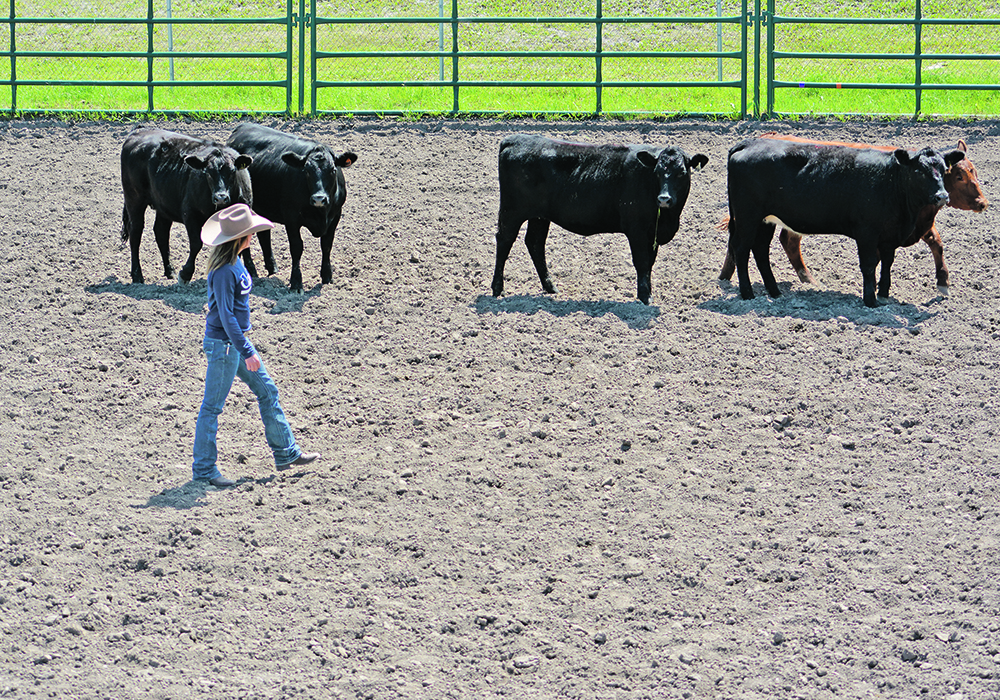The Ultimate Stockmanship Challenge in Pincher Creek, Alta., put more emphasis on a light touch than on the cattle prod
The Bud Williams stockmanship principles of handling cattle may not be in the mainstream of conventional ranching but advocates of the Oregon cowboy’s low-stress methods are carrying on the techniques long after his passing.
About a dozen ranchers recently gathered at the agricultural grounds in Pincher Creek, Alta., situated along a wandering stream in the shadows of the Rocky Mountains.
Hat waving, slapping, pushing or yelling at the half-dozen replacement heifers that had to be sorted could lead to disqualification in the competition, which was based on Williams’ stockmanship techniques that focus on light treatment of livestock.
“He (Williams) was like a savant with animals,” said Whit Hibbard, one of the three judges at the Ultimate Stockmanship Challenge. “What he came up with was radically different. The whole emphasis was learning how to work with the animals’ minds instead of just their bodies.”
Williams died in 2012 but his techniques continue to thrive through individuals such as Hibbard, who teaches stockmanship on his Montana ranch.
Fear, force and coercion are not used in the stockmanship methods, which stress a light touch rather than a cattle prod, said Hibbard.
“In low-stress handling, we learn how to work with their minds to make our idea their idea,” said Hibbard, who defined the technique as “livestock centred, behaviorally correct, psychologically orientated, ethical and humane method of working with animals that’s based on communication, not coercion.”
There is a payoff for using low-stress techniques, particularly in terms of positive live weight gains, conception rates and milk yield, he said.
“It’s also known that health goes up because stress is correlated with immune function,” said Hibbard.

The techniques aren’t only for small herd ranchers and do not require more cash investment, he noted.
“It works just as well with one animal, 1,000, 10,000,” he said. “What people will find if they make a serious study of the principles and techniques of low-stress livestock handling and actually practise it, they will find they can do twice the work in half the time.”
Trim loss can be as high as five percent of butchered animals handled too roughly, and that is reduced through low-stress methods, added Hibbard.
“A lot of that trim loss is caused by mishandling,” he said.
As for judging competitions, Hibbard said time isn’t a factor.
“We look first at the person’s mindset and their attitude,” he said with an eye toward the competitors showing that they are working with the animals instead of against them.
The competition’s organizer, Malcolm MacLean, said this is the first year for the event focused on spreading the word about low-stress techniques.
“There is not a lot of people who know about this even though this has been around since Bud Williams started it. It’s been around for years but there hasn’t been much exposure to it,” said MacLean. “It’s important because cattle need to be healthy and for the drugs we’re using to the cattle to actually work, they can’t be stressed out.”
Healthy and calm cattle also require fewer medications, MacLean added.
“From what I’ve seen, it’s a drastic change in how many animals are getting sick and how many animals are dying of that sickness just by changing the handling.”
As for how many Canadian ranchers have adopted low-stress handling techniques, MacLean said, “not enough.”

It’s not an easy method to adopt, he added, recognizing there are many in the industry who follow time-honoured traditions, which may be well established on multi-generational operations.
“It’s a totally different way to think so it’s a hard change. I’m just trying to put on a competition like this for people to come and be exposed to it,” said MacLean, who added he was one of those who followed traditional techniques before being introduced to a different way of doing things.
Veterinarian Zoe Wagenaar, who took part in her first competition, called the low-stress method fascinating.
And there are some practical benefits for veterinarians when they are treating animals.
“As a vet, I’m a lot safer,” she said of dealing with low stress livestock.
“I’ve seen a lot of ways how not to do it.”
Hibbard said use of the techniques developed by Williams are being slowly adopted to some degree in the industry “because they realize the economic benefit.
“Not as many animals are getting sick or dying, it’s easier to handle your animals and it’s not the proverbial fight.”
The other big factor in adopting these techniques, according to Hibbard, “is the consumer and public who are interested in how these animals are handled. That might be the big driver.”
















